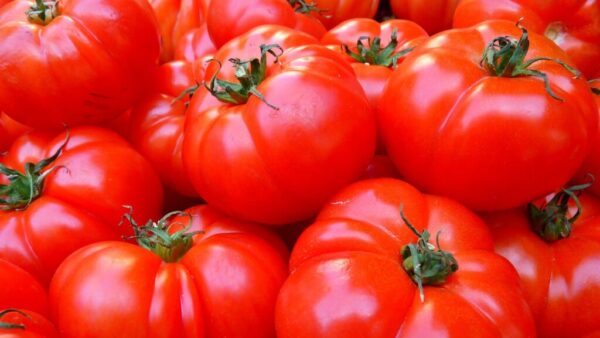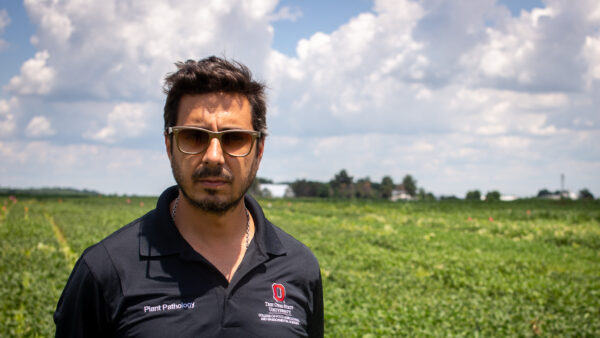Novel seed treatments hold great promise in reducing plant stress from abiotic events, such as drought and frost.
Did you know that the human population lives on less than 20 plant species? These 20 species generally provide the world’s staple sustenance. Three of those species provide 60 percent of that sustenance — wheat, rice and corn. Each of these species has a limited geographic region in which they can be optimally produced.
So an extreme weather event in one location can have profound impacts on food security around the world, explains Rusty Rodriquez a microbiologist and CEO of Adaptive Symbiotic Technologies.
But with near perfect growing conditions, some might argue that farmers in the Midwest don’t need to worry about abiotic stressors as much as those in other parts of the world.

Although growers in the Midwest are lucky to have above-average soils, they should be concerned about abiotic stressors, says Gregory Ginisty, Bayer product manager for North America. Drought, heat, cool wet springs are all things that growers in the Midwest know about and have stories on how it affected their crops.
BASF’s Mike Hofer, director of Seed Solutions for Functional Crop Care, agrees that abiotic stressors can play a big part when it comes to yield. Farmers often plant into soils that are too wet, too dry or have high salinity, he says.
One abiotic stressor that might not immediately come to mind, Hofer says is nutrient availability. “We know that most soils in the Midwest are full of nutrients, but those nutrients aren’t always available in a form that plants can use.
Ginisty says that soils across the Midwest have varying levels of available nutrients due to a variety of factors (tillage, crop rotation, soil type), which also play a role in abiotic stress.
Plants are most susceptible to stressors early in the season, when they are trying to get established. Stressors such as temperature and water availability can affect the germination capability of the seed and the plant’s vigor.
Ginisty uses corn as an example. Most of its yield potential is determined in the first four to six weeks, he says. If the plant is stressed during that time, it will affect development throughout the entire growing season, and ultimately, its yield potential.
Like pests and disease, these stress factors have been part of many companies’ research and development targets, says Ginisty, noting that the increased investments in this area coincide with the recent use of biological products, which play an important role.
“The evolution of technology, with applications in product formulation and studying modes of action, has also contributed to develop this space,” he says. “For example, molecular tools enable us to explore the plant’s response to abiotic stress.”
Too much water creates a situation in the soil where the plant cannot access the required oxygen it needs to germinate. This can have a negative impact on plant populations, which ultimately translates in lower yields, Ginisty says. In addition, saturated soils can create other problems such as soil crusting and compacted soils, leading to emergence problems.
On the other hand, if a seedling does not have access to water, it simply won’t germinate.
“Remember in school when you took a seed and placed it between two wetted cotton pads to make it germinate,” Ginisty asks. “Moisture is the key to life for seeds — as long as a seed is not in contact with moisture, it will not germinate.
“Drought has plagued agriculture and civilization throughout history, so much so that drought tolerant crops are considered the Holy Grail,” Rodriquez says.
In fact, he says billions of dollars have been spent on breeding drought- and stress-tolerant crops. But Rodriquez says those investments haven’t paid the dividends needed, and that’s where novel seed treatments can advance farm yields and food security.

Overcoming Stress
While some may debate the efficacy of breeding stress tolerant plants, there’s no question that novel seed treatments can help minimize the impact of such events.
Seed treatments can complement the work of breeders, giving the plant that extra boost in the early stages.
Seed treatments play a critical role — convenience, Hofer says. “They are already on the seed, so you don’t need to use additional manpower, fuel or time,” he says.
Bayer was an early innovator in this area, promoting the plant health benefits of imidacloprid in the 90s as Stress Shield.
“Since that time, we have recognized that many compounds can impact plant health and regulate the plant’s genetic make-up, particularly in the area of stress-related bio-chemical pathways,” says Jennifer Riggs, Bayer SeedGrowth product development manager. “Also scientists have learned how important these abiotic stresses are.
“With less arable land planned by 2050, reduced water availability for agriculture and an increase in global population, scientists around the world recognize the importance of developing
solutions to protect plants against abiotic stress.”
Similarly BASF brought to market the F500 molecule, which started as a foliar treatment and more recently has been used as a seed treatment.
“We found that over time, the F500 molecule reduces plant respiration, so it can more efficiently use carbon dioxide,” Hofer says. “This decreases ethylene production and increases plant health, which has really helped give crops better tolerance to frost and drought.”
Hofer adds that corn seed treated with the F500 molecule in Canada has better tolerated late spring frosts and helped plants retain yield potential. It has potential to add 2-3 degrees of protection.
Pulse crops in the northern growing regions are planted early. Sometimes, Hofer says the plants might be out of the ground for seven to 10 days, and then a frost moves in. With a treatment containing the F500 molecule, we have witnessed many situations where plants are visually greener and healthier, Hofer says. Those pulse plants that haven’t been treated get behind and they can’t catch up.
When looking at the effects of drought, Hofer explains that it can reduce the production of ethylene in stressed soybeans and cereals, limiting premature ripening. If we can keep the plant alive and as healthy as possible at the end of the day, the better off you are.
The F500 molecule is part of BASF’s Stamina seed treatment line of fungicides.
Rodriquez and his team at Adaptive Symbiotic Technologies found that certain fungi in the soil allow plants to flourish under harsh conditions. Treating seeds allows these microscopic fungi to colonize the root systems, conferring those adaptive abilities on food crops.
Field test results showed corn yields with the seed treatment increased 25 to 85 percent under drought conditions using 25 to 50 percent less water. 2015 marked the fourth year of field trials covering 14 states.
“We’re concluding these products will perform irrespective of soil type and climate zone,” Rodriquez says. “There is nothing telling us to not move forward.”
BioEnsure launched in December of 2015 in the United States and around the world. “Our first launch is with corn because we have spent a fair amount of time researching it,” Rodriquez says.
Riggs notes that Bayer’s Poncho/VOTiVO helps plants generate more roots that can explore greater soil surface area to capture available nutrients. In addition to more roots, she says Poncho/VOTiVO has the ability to change the root anatomical traits, reducing the plant’s carbon needs when various abiotic stressors are present.

Invest in Innovation
“Soil health is key to unlocking a seed’s potential,” Riggs says.
Because of this, Bayer is developing Poncho/VOTiVO 2.0 — the next generation, which will bring a new biological into the mix to address soil nutrient availability.
“Corn growers can expect the same consistent protection against above- and below-ground insects and nematodes, with the added benefit of increased microbial activity in the soil around the root, resulting in more nutrients being available for the plant’s needs,” Riggs says.
Furthermore, BASF is working to develop a new coating, called Convenio. Hofer explains that it acts like a barrier and works best in cool and wet conditions in the northern hemisphere where no-till is a popular practice, or hot and dry conditions.
Convenio is set to launch within the next two years.
Hofer says that around the world, farmers are putting their crops in earlier and earlier, in some areas trying to get two crops out of a year.
“That’s why we focused on bringing added protection in cool, wet conditions,” he says. “We have about 20 new products coming onto the market in the next five years. They are not all for abiotic stressors, but many are.”
With regard to nutrient availability, BASF is looking at ways to get the crop to use the nutrients in the soil more efficiently with popup or startup fertilizers that are applied in the root zone during planting.
Rodriquez’s company plans to expand its use of BioEnsure into other crops and has been specifically researching cotton. They also plan to include nutritional enhancements in the future.
Adaptive Symbiotic Technologies has proprietary treatments for corn and rice and is working on soybean, wheat, barley and sorghum.
While companies have a jumpstart on delivering novel seed treatments to the market, a changing climate is in the forecast. According to the 2014 National Climate Assessment, Midwest farmers can expect more extreme heat, along with heavier downpours and flooding, and serious consequences for the Great Lakes ecosystems.
According to the report, climate change will bring a mix of competing effects. Higher average temperatures bring a longer growing season, but that also increases the risk of sudden cold snaps in the spring. Heat waves during pollination can cut down crop yields, and seasonal periods of hotter temperatures tend to be accompanied by drier conditions, which are especially likely to increase in the region’s southern portion around Missouri. Exerts say this means lower crop yields as warming goes up.
If this climate reports holds true, novel seed treatments such as the ones listed above will become even more valuable in helping farmers increase and maintain yields.











